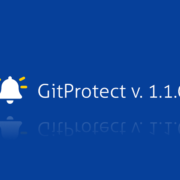
Bitbucket CI/CD – How to Widely Adopt DevOps Processes
In the DevOps Trend Survey created by Atlassian 9 out of 10 teams reported that DevOps had a positive impact on their business. Knowing that it is really important to make sure that DevOps processes are adopted correctly and to the fullest of their potential. The true issue for IT managers aiming to accelerate DevOps adoption is to eliminate as many barriers as possible, starting with the way Bitbucket pipelines are built and maintained.
Important things about Bitbucket CI/CD
The CI/CD pipeline is one of the best practices that may be used to deploy code changes more often and in a reliable way. A pipe is based on a script that is located in a Docker and contains the commands you previously specified in your YAML, as well as a few more. CI/CD simply means Continuous Integration and Continuous Delivery/Continuous Deployment.
Continuous Integration is the process of integrating code updates from several contributors into a single software project automatically. That main DevOps best practice allows developers to merge code changes into a central repository.
Continuous delivery directs an organization’s efforts toward developing a simplified, automated software release process. An iterative feedback loop is the core of the release process. The goal is to get the software to the end-user as soon as feasible, learn from their feedback, and improve using it.
Continuous Deployment is the process of releasing software while using automated testing to ensure that codebase is stable enough to be deployed to a production environment.
Setting CI/CD pipeline? Then don’t forget about backup. Secure your code with the first professional Bitbucket backup.
What is DevOps?
DevOps is a concept that combines development and operations to describe a collaborative approach to the tasks done during the software delivery process. This agile way of development improves communication and cooperation amongst teams in a company. The goal of DevOps is to create a working environment where software development, testing, and delivery can happen efficiently and as reliably as possible. Introducing automated solutions is important for creating consistent and frictionless CI, CD. Bitbucket offers a few ways of dealing with pipelines.
Setting Bitbucket CI/CD pipeline
Bitbucket Pipes are an easy way to create a pipeline configuration. If you are thinking about working with third-party tools they are crucial. Simply paste the pipe into the YAML file, provide a few important information, and the rest will be taken care of automatically. The options are unlimited since you may add as many pipes as you like. To check the complete list of pipes visit the Atlassian website.
The simple way to add pipes to the pipeline is through the online editor. Just edit your bitbucket-pipelines.yml file by pasting the selected pipe into the script section of your step. Remember to add your specific values.
There are also ways to create custom pipes. Simple pipes require four steps to set up:
- Creating a repository
- Creating a script
- Configuration of Dockerfile
- Building container and uploading it to Dockerhub
Simple pipes are a great option if you want to start fast. But our suggestion is to consider creating a complete pipe whose benefits include best practices and CI/CD to automate versioning. If you choose to make a complete pipe you will also need to make a few changes in:
- pipe metadata – adding details of your pipe
- a readme – adding details on how to use your pipe
- automated testing – to ensure changes are not problematic
- semantic versioning – to clarify the version of your pipe
- debug logging – making sure end-user can easily troubleshoot
Why should you adopt DevOps?
DevOps has been shown to enhance software delivery speed, efficiency, and quality, as well as employee morale and motivation. The convenience and dependability that follow from adopting a DevOps strategy to software delivery inspire the confidence to release regularly. This enables constant input to be quickly integrated into future versions and true Agile software delivery.
To put it simply, DevOps speeds the whole software lifecycle, from development through deployment in production. By stressing the need of breaking down boundaries that divide development, operations, support, and management teams, DevOps extends the already popular programming ideas of agile development, continuous integration, and continuous delivery into communication.
How to successfully adopt DevOps processes
To help you with the full adoption of DevOps processes here are a few additional steps that will surely make it easier.
Technology stack normalization
The technology stack is the all of software infrastructure that is necessary for applications to execute their functions. For example operation systems or databases. This step will help you to deploy new apps and services more quickly while also reducing mistakes caused by inconsistency. Best of all, the quality of all services improves as the common patterns change and improve.
Infrastructure Automation
Automation boosts productivity and efficiency. Instead of manually configuring hardware, software, or operating systems, infrastructure automation allows developers teams to automatically manage, monitor, and facilitate resources. Because the infrastructure setup is described in scripts, the process is also referred to as programmable.
Standardization
Many companies are having trouble adopting DevOps across the board, especially when there is no consistency in tools, non-repeatable procedures, or ad-hoc methods.
Data Protection
Bitbucket, as an Atlassian tool, operates in the Shared Responsibility Model. According to this concept, Atlassian is responsible for the system, application, and entire infrastructure but you, as the final user should take care of the data stored and processed in Bitbucket. So your DevOps processes should never underestimate the necessity of data protection and Bitbucket backup. Even Atlassian itself recommends having a third-party Bitbucket backup software in place. Just like GitProtect.io.
DevOps Adoption Framework
The DevOps adoption framework is a complete framework for tool support and solution accelerators that helps organizations develop a methodical and planned transition road map, deploy a continuous delivery toolchain, and overcome typical DevOps implementation obstacles.
Conclusion
One of the mentality shifts away from a waterfall or other classic development approaches is the concept of shared ownership and cooperation within teams. People working together with the same goals are the foundation of a successful DevOps journey. The important success criteria for enabling DevOps adoption throughout the company include a central DevOps team driving DevOps adoption, governance facilitated by a DevOps adoption framework, technology stack normalization, infrastructure automation, and standardization.







